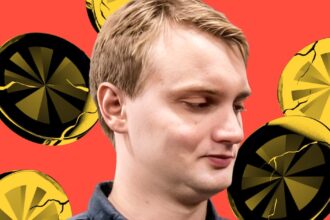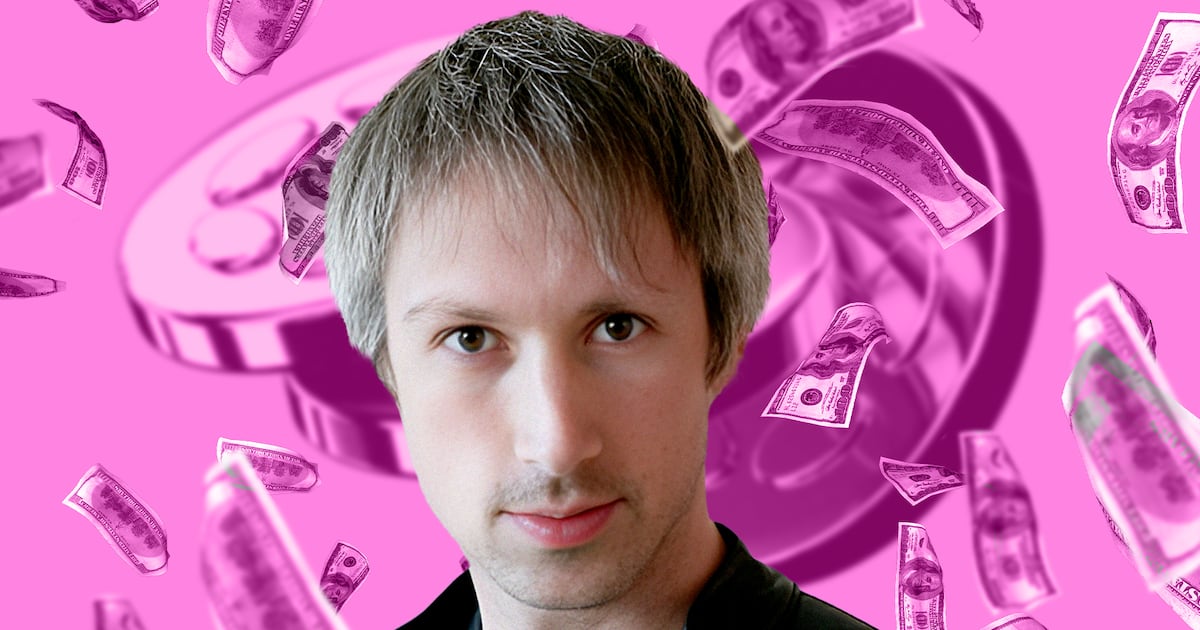
When Polkadot's Blockchain Academy students wrapped up their five-week developer boot camp in Hong Kong earlier this year, it was time to party.
Gathering for a graduation ceremony, the rank and file of the DeFi network saw a familiar face behind the DJ rig — Gavin Wood, co-founder of Polkadot and one of the brains behind Ethereum.
First up: a track by French musician NTO. Daft Punk and Franz Ferdinand songs followed.
Welcome to Gavin Wood's next act.
A decade after playing a key role in building the DeFi ecosystem, Wood, 44, is picking up his original passion — music.
“If you're going to publish something with DJ Wasabi, it's me,” Wood said News.
Looking for a groove
His move comes as Polkadot, the so-called blockchain of blockchains, struggles to find a groove.
In 2023, Parity Technologies, which is building the Polkadot network, laid off about a third of its 385 staff because, according to employees, it ran out of money.
Join the community to get our latest articles and updatesPolkadot was a top 10 crypto venture in terms of token value. This year, it has a DOT token 50% dropped ETH rose 5% and archival Cardano fell 45%.
In July, Polkadot faced more heat after critics blasted its decision to spend $87 million in the first six months of the year.
About half was spent on marketing initiatives, including $400,000 to create an animated version of the Polkadot logo on crypto site CoinMarketCap.
“It's crazy how much money Polkadot Treasury is wasting on misguided marketing,” said Sean Lanlage, former core developer at Parity. Said On X.
A Parity spokesperson said the marketing costs are derived from the project governance system. “Spending on marketing initiatives is a direct result of on-chain treasury spending voted on by the community,” the spokesperson said. News.
With Wood turning to DJing, many in DeFi may wonder if he's retiring from his day job.
Wood dismissed such concerns and played down his role in the project, even though he was the principal architect of the parity.
“I'm very short on stock,” he said.
'I am a scientist'
During the Web3 Summit in August, Wood spoke News In Berlin's Funkhaus, a former East German radio station, now a studio and concert venue.
It was a fitting place to speak as the Lancaster, England native shared how he approaches blockchain design and technology.
“I like to experiment. I'm a researcher, I'm a scientist, I'm an educator,” he says. “Curiosity is my main driving factor here.”
'The biggest thing for Polkadot is that Ethereum is somewhat stagnant.'
Indeed, Wood has a knack for pursuing unusual ventures. He is preparing to launch a “personalized” system later this year to tattoo people with machine-generated designs. Look like QR codes.
Wood's career began with a mashup of computer science and music.
In 2005, Wood completed a five-year PhD program at the University of York, where he researched how computers hear music. He also created a visual representation of what the machine heard.
his thesis Dave Brubeck's classic jazz number Take Five shows what the computer looks like.
Wood is also down on tech projects.
He worked as a researcher for Microsoft and taught geometry at a Catholic school in Italy. He sold lighting systems to nightclubs and bars in London, then tried to launch a Microsoft Word plug-in to automate the tedious work of lawyers.
Before long, he met Vitalik Buterin, Jeffrey Wilke, and Charles Hoskinson, who were developing Ethereum. For Wood, Ethereum was essentially a weekend project that he pursued while building that Word plug-in in the early 2010s.
Inventing Ethereum
He wrote one of the first Ethereum clients – a software application that allows developers to interact with the blockchain – in the programming language C++. Wood helped invent Ethereum's programming language, Solidity, and co-authored the Yellow Paper, the first official description of what the network should do and how to do it.
“I also bring a lot more design and engineering, I would say almost like an artistic nature,” he says. News.
While Wood has cemented his position in crypto by co-creating the blockchain system that has become a cornerstone of decentralized finance, he complains that Ethereum lacks dynamism.
“The Ethereum protocol is essentially unchanged from the vision that Vitalik and I had back in 2014,” he said.
In 2016, Wood struck out on his own and co-founded Polkadot with Robert Habermeier and Peter Czaban. The idea is to create a more efficient and affordable network to support dApps and smart contracts.
“The biggest thing for Polkadot is that Ethereum has, to some extent, stalled,” he said. “I wanted to build.”
The project raised $144 million in 2017 through an initial coin offering — a crypto crowdfund where people invest real money in exchange for the network's native tokens. It officially started producing blocks in 2020.
During the 2021 boom, its total value reached $54 billion and became a DOT top 10 cryptocurrency.
Messy bridges
He also launched Blockchain to solve key obstacles facing Ethereum.
Layer 2 blockchains — mini blockchains that aggregate transactions into low-cost proofs before sending them to Ethereum — are now commonplace on Ethereum.
Polkadot introduced a similar design called parachains from day one.
Any project that chooses to build on Polkadot and launch their own parachain can easily interact with other Polkadot-based projects.
For Ethereum-based Layer 2 networks, users must interact with clunky bridges to move funds between networks.
Polkadot more closely resembles the initial vision for Ethereum, Wood said.
“When it's all fields, Layer 2s aren't dreams,” he said. “The dream that Ethereum core developers were coming up with five years ago looks like a polkadot.”
A strange col
In April, he further fleshed out this vision with a Polkadot upgrade called JAM, short for Join-Accumulate Machine. Instead of builders bidding for the parachain, JAM allows anyone to build it.
The upgrade is not just technical. This comes at a time when Polkadot is trying to revive the interest it experienced in 2021.
Bucking a defiantly long funk isn't easy.
Employees said Parity had to cut many staff because of top-heavy executive salaries, but the cull was handled awkwardly.
The company announced the layoffs a week before the company's retreat to Mallorca.
A Parity employee at the time called it a “surreal, sick joke”. Wood did not attend the beach retreat, leaving many angry and confused.
In July, Parity completed a reorganization and the venture is hiring new staff. Its job posting board lists 11 open positions, a Parity spokeswoman said.
Now Wood is raising eyebrows again with his next project, which he calls “proof-of-ink.”
At the Web3 Summit, Wood explained how the polkadot blockchain could enable unique tattoo designs. Designs prove who a person is online without revealing other information. In crypto, so-called Sybil attacks — where a user creates multiple identities — are a common problem.
Wood showed off his own QR-like code on his bicep. He is working on other designs before launching in late 2024.
'I really hate the spread that this is some sort of tattoo recognition system.'
The practice of tattooing an identity on people's skin provokes a strong reaction from people, especially in a place like Germany. At the implication of wood bristles.
“I've emphasized for a long time that it's not about identity,” he said News. “It's about personality. I've spent a long time emphasizing privacy, and it's using strong crypto to guarantee privacy.
“I really hate the spread that this is some sort of tattoo recognition system, because that's total misinformation.”
The project shows how Wood follows his instincts wherever they lead, whether it's crypto-related tattoos or spinning music as DJ Wasabi.
“To me, it's not really worth doing unless it's a novel,” he said. “I'm an experimenter.”
Update: The article was updated on September 4 to report Parity's hiring and governance practices regarding marketing expenses.
Liam Kelly is a DeFi Correspondent News. Got a tip? Email him [email protected].
Related TopicsTheriumpolkadot






